- Community Home
- >
- Services
- >
- The Cloud Experience Everywhere
- >
- Predictive Data Analytics Tools (Techniques & Pric...
Categories
Company
Local Language
Forums
Discussions
Forums
- Data Protection and Retention
- Entry Storage Systems
- Legacy
- Midrange and Enterprise Storage
- Storage Networking
- HPE Nimble Storage
Discussions
Discussions
Discussions
Forums
Discussions
Discussion Boards
Discussion Boards
Discussion Boards
Discussion Boards
- BladeSystem Infrastructure and Application Solutions
- Appliance Servers
- Alpha Servers
- BackOffice Products
- Internet Products
- HPE 9000 and HPE e3000 Servers
- Networking
- Netservers
- Secure OS Software for Linux
- Server Management (Insight Manager 7)
- Windows Server 2003
- Operating System - Tru64 Unix
- ProLiant Deployment and Provisioning
- Linux-Based Community / Regional
- Microsoft System Center Integration
Discussion Boards
Discussion Boards
Discussion Boards
Discussion Boards
Discussion Boards
Discussion Boards
Discussion Boards
Discussion Boards
Discussion Boards
Discussion Boards
Discussion Boards
Discussion Boards
Discussion Boards
Discussion Boards
Discussion Boards
Discussion Boards
Discussion Boards
Discussion Boards
Discussion Boards
Community
Resources
Forums
Blogs
- Subscribe to RSS Feed
- Mark as New
- Mark as Read
- Bookmark
- Receive email notifications
- Printer Friendly Page
- Report Inappropriate Content
Predictive Data Analytics Tools (Techniques & Pricing): 2018 Guide
With a host of data analytic tools on the market, it’s hard to know which ones are right for your business. From tools designed to increase business insight, to ones built to aid financial forecasting, it seems there’s a predictive analytics tool to suit every industry.
But how do you know which ones are best?
In this article, we’ll show you some of the best predictive modelling tools available in Azure. Taking into account key user benefits and the most fitting use cases, we’ll reveal the top tools that are worthy of your investment.
We’ll also discuss:
- How modelling in the cloud can boost your outcomes
- Four common predictive modelling techniques to use in the cloud
- The cloud’s competitive price structure and its scalable options
Let’s start by taking a closer look at predictive analytics in the cloud.
Predictive Analytic Tools in the Cloud
In 2017, 36 percent of businesses felt predictive data analytics was the most important area for investment.
Unfortunately, due to the staggering costs of traditional advanced analytic applications, many organisations have been unable to benefit from the technology.
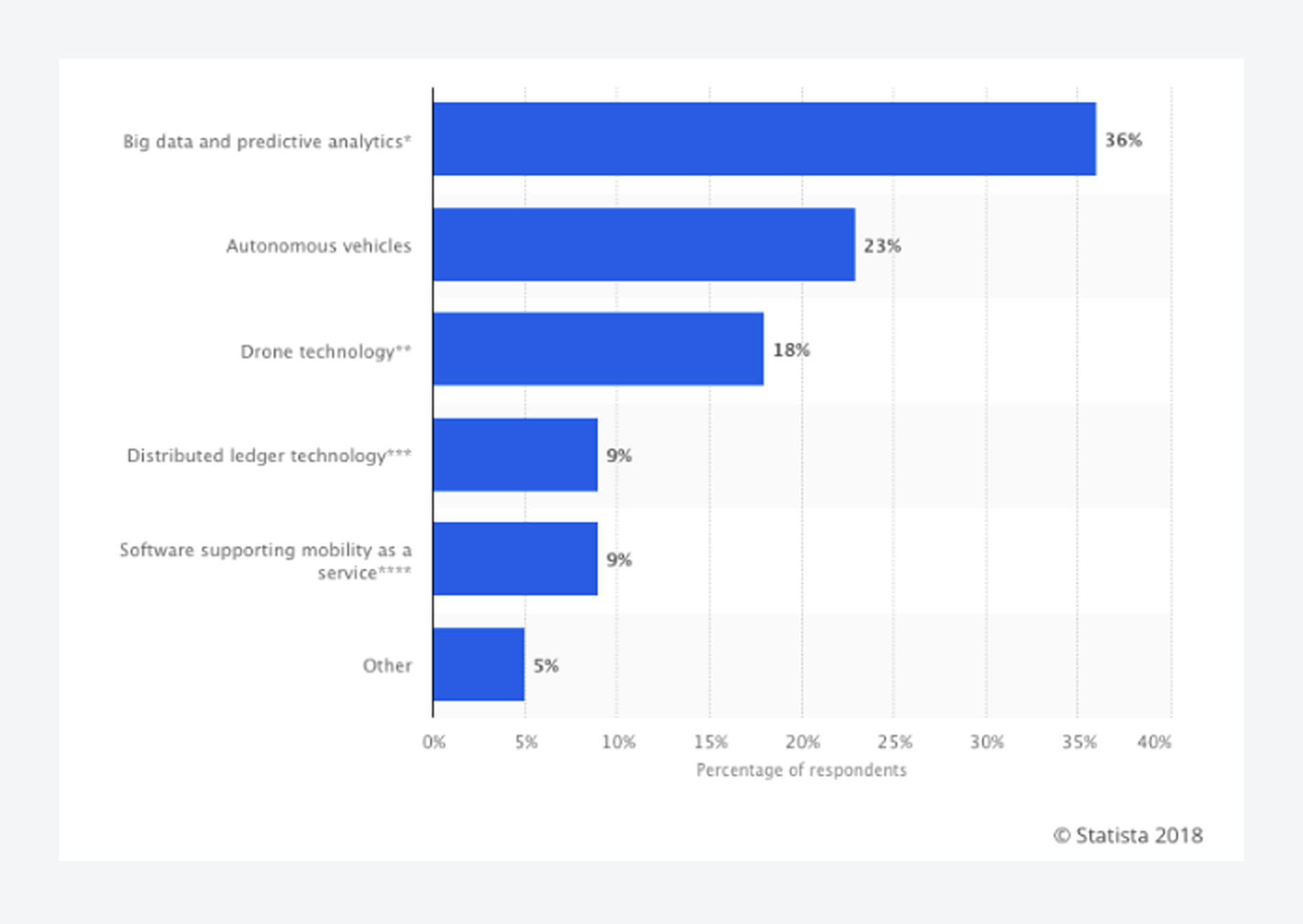
36% of businesses felt Big Data and predictive analytics would be the biggest driver of change over the next five years.
Now, thanks to the advancement of data analytics in the cloud, predictive modelling is finally reaching the mainstream, with growing enterprises able to make informed, data-driven business decisions.
Thanks to the wide range of cloud analytic tools available on Azure, businesses in the cloud are able to innovate internally, minimise human error and gain an accurate and actionable view of business operations.
Here are some of Azure’s best data analytic tools.
Predictive Analytics Tools: Introducing Cortana Intelligence Suite [CIS]
Cortana intelligence Suite is a fully-managed Business Intelligence, Big Data, and Advanced Analytics service based in the Microsoft Cloud. CIS allows users to transform data into intelligent actions and is particularly useful to those working in the financial services.
CIS has a host of predictive analytics tools to support your predictive modelling projects. The main heavy-weights are Azure Machine Learning Studio and Power BI.
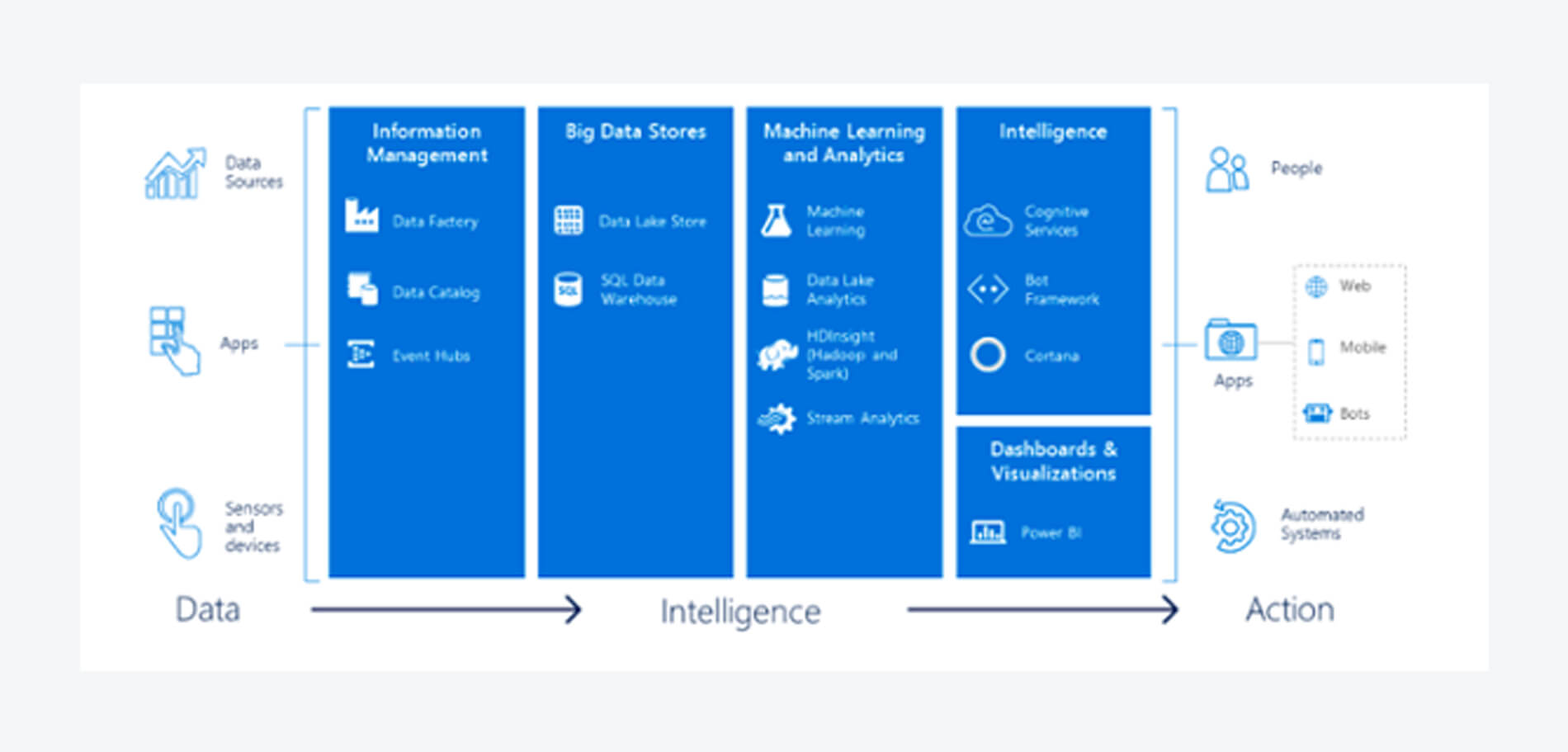
Azure Machine Learning Studio: Financial Forecasting at its Finest
Financial forecasting has traditionally been carried out in Excel workbooks on expensive, time-consuming on-premises hardware. But predictive analytics techniques have moved on since the 1980s and now it's time for an upgrade.
With Azure Machine Learning Studio, organisations are able to improve the accuracy and performance of spreadsheet-based models. Once your Excel data is uploaded to Azure, you can use Microsoft’s intuitive machine learning algorithms and your own understanding of R statistical models to build faster, more elastic predictive analytics applications.
Microsoft did exactly this when designing their own analytics engine, increasing the accuracy of forecasting predictions from 70 to 95 percent.
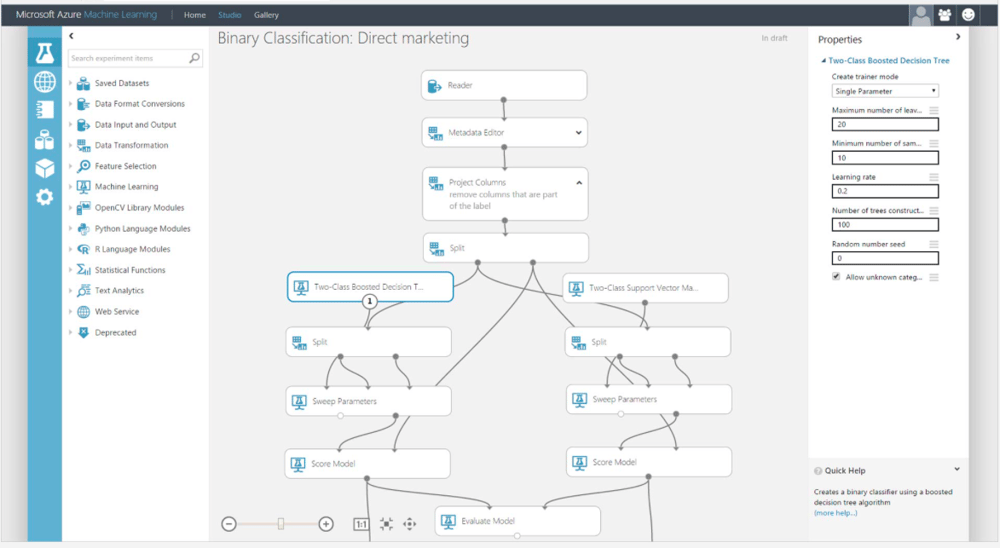
Power BI: Turning Data into Actionable Insights
Power BI is a suite of business analytics tools hosted in Azure. Ideal for delivering insights to your entire organisation, Power BI is celebrated for its ability to simplify data prep and create highly visual, accessible analytics reports.
Setting up R integration between Power BI and Azure Machine Learning Studio is the key to driving real business value and making analytics reports more accessible to the people that need them.
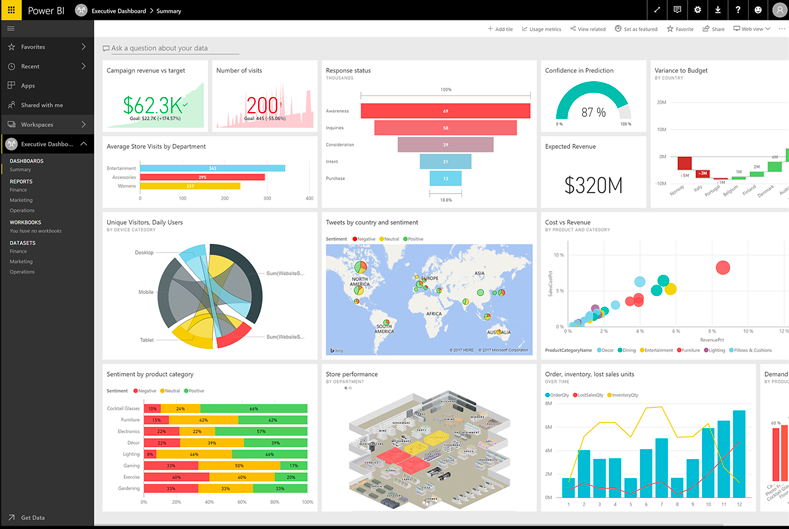
New data analytics tools: An ACE in the hole
Azure Calculator Engine (ACE) is a scalable processing solution created in-house at RedPixie. Designed to enable organisations to run Excel workbooks without the need for Excel itself, ACE allows businesses to focus on core business processes, leaving the distributed computing to Azure.
Built to run the most complex models, ACE has been praised for its ability to:
- Reduce error rate
- Run demanding models much faster
- Improve productivity within IT and modelling teams
Best suited to organisations limited by Excel’s capabilities, ACE allows businesses to expand their workbooks in an efficient and economic way.
Common Predictive Analytics Techniques
As data science progresses, the cloud is making both established and experimental predictive modelling techniques more accessible. Some notable examples include:
- Gradient Boosting: A machine learning technique for regression problems. Gradient boosting is designed to increase the accuracy of models by measuring errors in each step and correcting for the next one.
Regression demand estimation has been used in this example experiment, found on Microsoft’s blog. The experiment demonstrates demand estimation using regression with UCI bike rental data.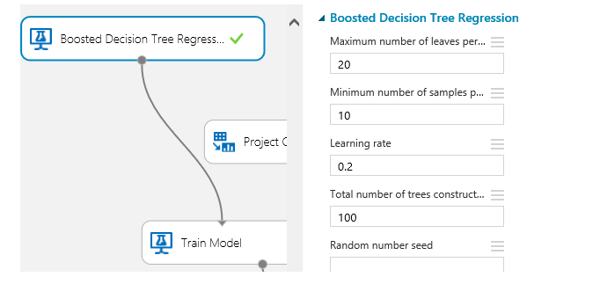
(Image shows boosted tree regression in bike rental demand data.) - Classification: Also known as supervised learning, classification tasks are used to train neural networks in to detect faces, identify objects in photos and classify text as spam.
An example of a classification problem is the classification of iris flowers. This data set is found in Azure Machine Learning Studio and the task is to classify iris flowers based on their features. You can find the full details of this experiment in this Microsoft blog.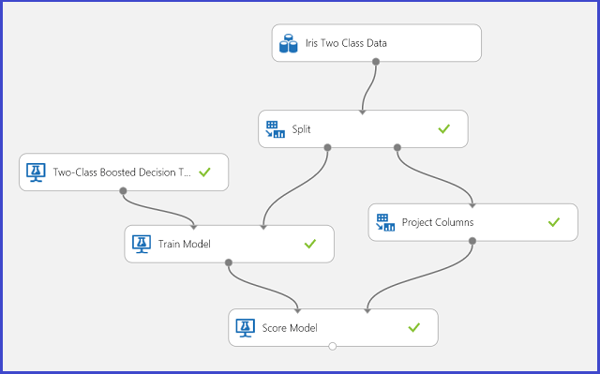
(Image shows Iris two-class classification problem experiment found in Azure Machine Learning Studio.) - Clustering: Using the analytical capabilities of Power BI, this technique allows users to easily divide datasets into more manageable subsets and reveal structure within the data.
An example of clustering can be found in the same Iris data set found in Azure Machine Learning Studio. Here the flowers are clustered into two classes. Find out more in this Microsoft blog.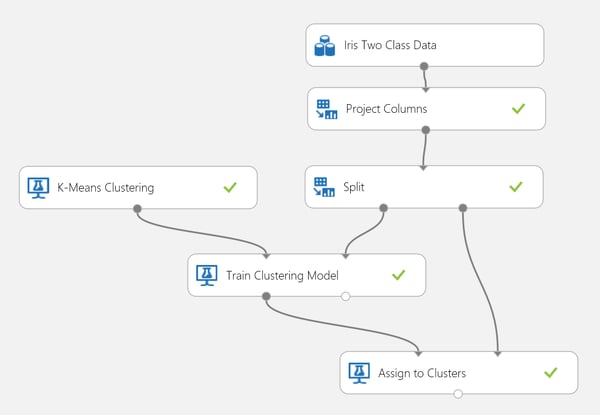
(Image shows Iris clustering problem experiment found in Azure Machine Learning Studio.) - Bayesian Recommendation: A probabilistic model for generating personalised item recommendations. The model makes use of user metadata and previous user behaviour.
A typical Azure Machine Learning experiment for a recommender system looks like the image below.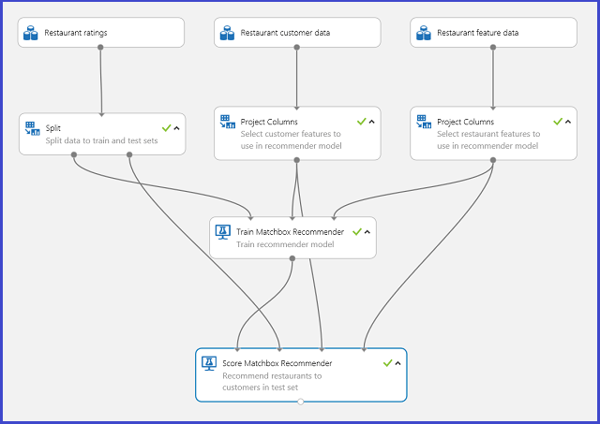
Cheaper, more Elastic Predictive Analytics Models
Pay only for What you Use
Traditionally, there were only a handful of proprietary analytical software solutions. These were expensive and out of reach to most enterprises. However, thanks to open source software in the cloud, data analytics is now open to companies of all sizes.
The main difference between the analytic solutions of the past and the ones of today is that the cloud uses a scalable pricing model. Predictive modelling in the cloud allows users to pay for the resources they need and then power down when they’re done, reducing the capital and operational costs of large enterprise applications.
Economic Scalability
On-premises, massive computing power usually scales vertically with the addition of more CPUs and the creation of bigger, more powerful servers. This is an expensive, time-consuming process, which is slow to react to evolving business needs.
By contrast, the cloud scales out, adding more units horizontally. This makes scaling your predictive models more economic, especially if you need to move existing legacy apps into the cloud.
Supercharge Productivity with Predictive Modelling in Azure
Predictive modelling in the cloud doesn’t just save you pounds, but weeks of lost productivity. With software automation, you can develop and deploy analytical applications in minutes rather than months and begin ingesting data almost immediately.
For example, our data platform team successfully re-platformed a leading insurer’s risk management system, Algo One, in Azure. With the service originally housed in an IBM data centre, this migration significantly reduced its total cost of ownership, while also increasing its speed and performance.
Run times for critical batch and intraday processes are down from 18 hours to less than three. And while, historically, the process of a full DR build can take weeks, thanks to the elasticity of Azure, it now takes just 30 minutes.
Commit to the Future of Predictive Business Analytics
Predictive analytic techniques are fast becoming a business commodity, with a PwC survey finding that data analysis holds a high level of significance in critical decision-making.
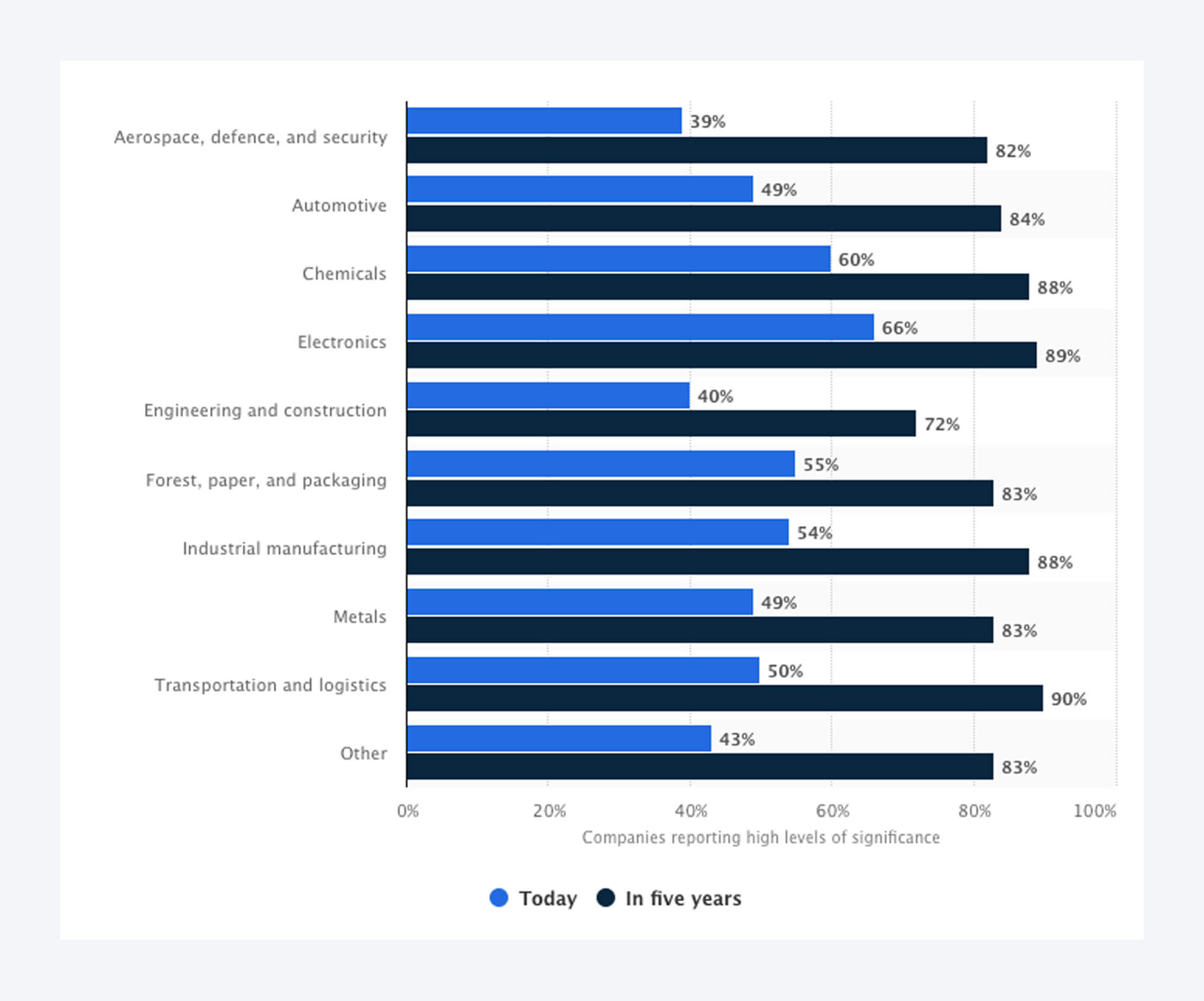
(Graph shows the impact predictive analytic techniques have had on different industries)
The power to predict and react to future risks and opportunities has incredible implications for the healthcare, financial and insurance sectors.
Furthermore, predictive analytics tools allow companies to make informed, risk-aware decisions that increase the accuracy of key business models. As this article shows there are a wide range of cloud analytics tools on the market, including:
- Azure Machine Learning Studio
- Power BI
- Azure Calculator Engine
Within these cloud analytic tools there are many effective, common predictive analytics techniques to consider, for example:
- Gradient boosting
- Clustering
- Classification
- Bayesian Recommendation
Once the reserve of elite enterprises, predictive data analytics in the cloud opens up transformative insights to companies of all sizes. As we’ve discussed in this article, there are plenty of key benefits to using cloud analytics tools:
- Pay for what you use
- Economic scalability
- Improved productivity
Thanks to Azure’s economic price structure, scalability and reliable performance, there has never been a better time to innovate and explore.
To find out how we’re helping organisations embrace the future of cloud analytic tools, check out our predictive modelling page.
- Back to Blog
- Newer Article
- Older Article
- Deeko on: The right framework means less guesswork: Why the ...
- MelissaEstesEDU on: Propel your organization into the future with all ...
- Samanath North on: How does Extended Reality (XR) outperform traditio...
- Sarah_Lennox on: Streamline cybersecurity with a best practices fra...
- Jams_C_Servers on: Unlocking the power of edge computing with HPE Gre...
- Sarah_Lennox on: Don’t know how to tackle sustainable IT? Start wit...
- VishBizOps on: Transform your business with cloud migration made ...
- Secure Access IT on: Protect your workloads with a platform agnostic wo...
- LoraAladjem on: A force for good: generative AI is creating new op...
- DrewWestra on: Achieve your digital ambitions with HPE Services: ...



